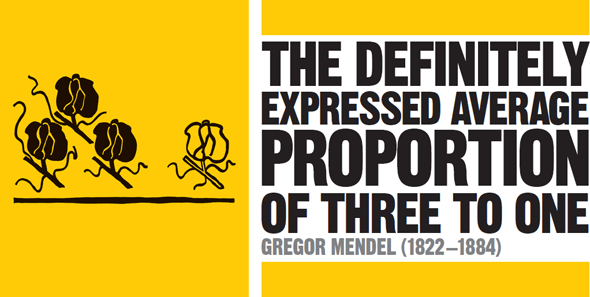
IN CONTEXT
Biology
1760 German botanist Josef Kölreuter describes experiments in breeding tobacco plants, but fails to explain his results correctly.
1842 Swiss botanist Carl von Nägeli studies cell division and describes threadlike bodies that are later identified as chromosomes.
1859 Charles Darwin publishes his theory of evolution by natural selection.
1900 Botanists Hugo de Vries, Carl Correns, and William Bateson concurrently “rediscover” Mendel’s laws.
1910 Thomas Hunt Morgan corroborates Mendel’s laws and confirms the chromosomal basis for heredity.
In the history of scientific understanding, one of the greatest of all the natural mysteries was the mechanism of inheritance. The fact of heredity had been known ever since people noticed that family members were recognizably similar. Practical implications were everywhere – from the breeding of crops and livestock in agriculture, to the knowledge that some diseases, such as haemophilia, could be passed on to children. But no-one knew how it happened.
Greek philosophers thought that there was some sort of essence or material “principle” that was passed from parents to offspring. Parents conveyed the principle to the next generation during sexual intercourse; it was supposed to have originated in the blood, and paternal and maternal principles blended to make a new person. This idea persisted for centuries – mainly because no-one came up with anything better – but when it reached Charles Darwin, its fundamental weakness became all too clear. Darwin’s theory of evolution by natural selection proposed that species changed over many generations – and in so doing gave rise to biological diversity. But if inheritance relied on the blending of chemical principles, surely the biological diversity would be diluted out of existence? It would be like mixing paints of different colours, and ending up with grey. The adaptations and novelties upon which Darwin’s theory rested would not persist.
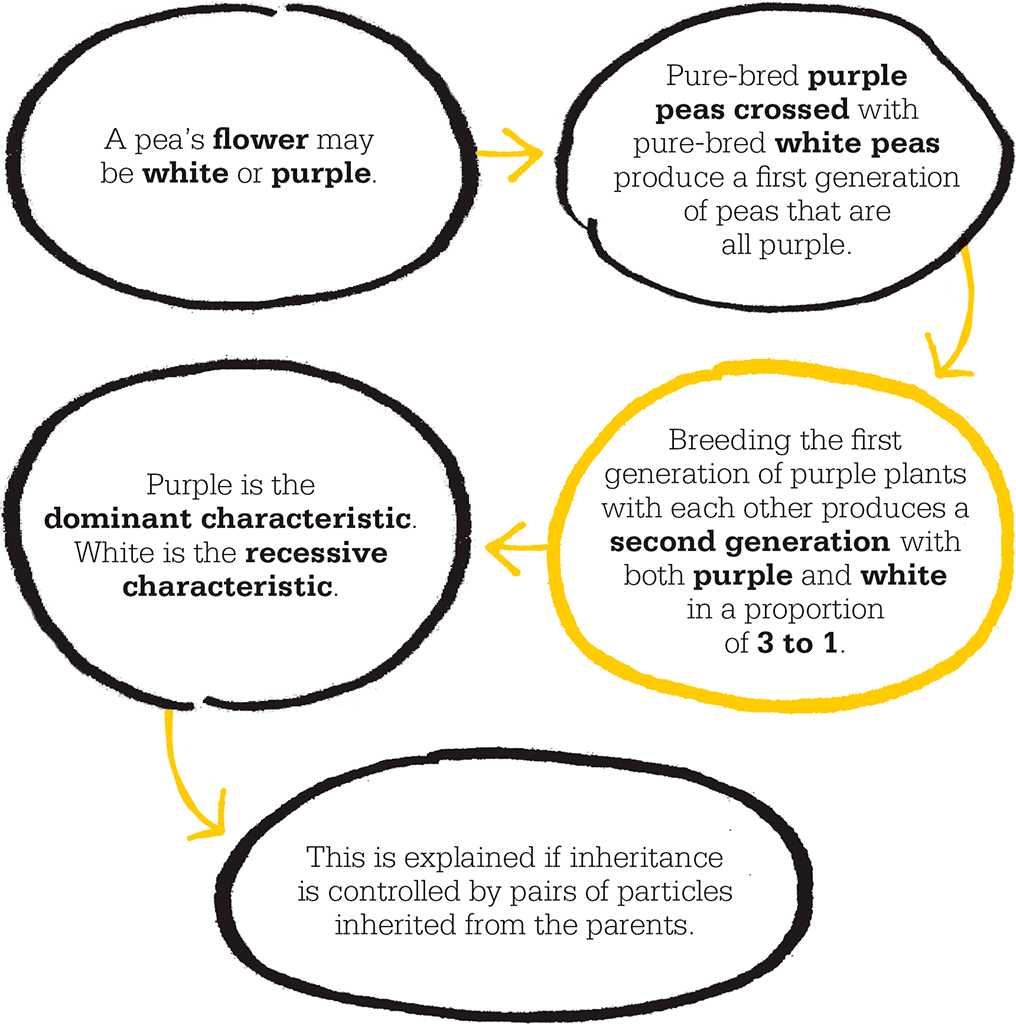
Mendel’s discovery
The breakthrough in understanding inheritance came nearly a century before the chemical structure of DNA was established – and less than a decade after Darwin published On the Origin of Species. Gregor Mendel, an Augustinian monk in Brno, was a teacher, scientist, and mathematician who succeeded where many better-known naturalists had failed. It was, perhaps, Mendel’s skills in mathematics and probability theory that proved the difference.
Mendel carried out experiments with the common pea, Pisum sativum. This plant varies in several identifiable ways, such as height, flower colour, seed colour, and seed shape. Mendel started looking at the inheritance of one characteristic at a time and applied his mathematical mind to the results. By breeding pea plants, which were easily cultivated in the monastery grounds, he could carry out a series of experiments to obtain meaningful data.
Mendel took critical precautions in his work. Recognizing that characteristics can skip and hide through generations, he was careful to start with pea plants of “pure” stock – such as white-flowered plants that only produced white-flowered offspring. He crossed pure white-flowered plants with pure purple-flowered ones, pure tall with pure short, and so on. In each case, he also precisely controlled the fertilization: using tweezers, he transferred pollen from unopened flower buds to stop them from scattering indiscriminately. He performed these breeding experiments many times and documented the numbers and characteristics of plants in the next generation, and the generation after that. He found that alternate varieties (such as purple flower and white flower) were inherited in fixed proportions. In the first generation, only one variety, such as purple flower, came through; in the second generation, this variety accounted for three-quarters of the offspring. Mendel called this the dominant variety. He called the other variety the recessive variety. In this case, white flower was recessive, and made up a quarter of the second generation plants. For each characteristic – tall/short; seed colour; flower colour; and seed shape – it was possible to identify dominant and recessive varieties according to these proportions.

Inherited characteristics had been observed for millennia before Mendel, but the biological mechanism that produced phenomena such as identical twins was unknown.
The key conclusion
Mendel went further and tested the inheritance of two characteristics simultaneously – such as flower colour and seed colour. He found that offspring ended up with different combinations of traits and – once again – these combinations occurred in fixed proportions. In the first generation, all plants had both dominant traits (purple flower, yellow seed), but in the second generation there was a mixture of combinations. For instance, one-sixteenth of the plants had the combination with both recessive traits (white flower, green seed). Mendel concluded that the two characteristics were inherited independently of one another. In other words, inheritance of flower colour had no effect on inheritance of seed colour and vice versa. The fact that heredity was precisely proportional in this way led Mendel to conclude that it was not due to the blending of vague chemical principles after all, but happened because of discrete “particles”. There were particles controlling flower colour, particles for seed colour, and so on. These particles were transferred from parents to offspring intact. This explained why recessive traits could hide their effects and skip a generation: a recessive trait would only show through if a plant inherited two identical doses of the particle concerned. Today we recognize these particles as genes.
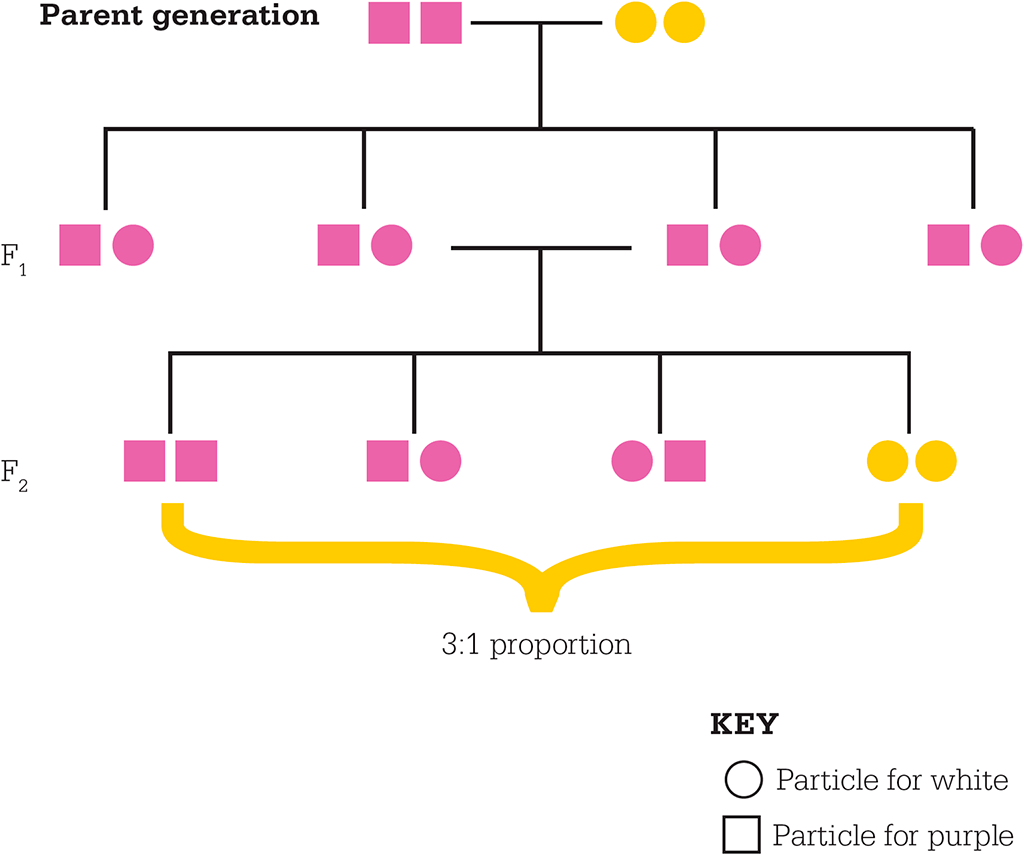
The first generation of peas (F1) bred from “pure” white- and purple-flowered plants all have one particle from each parent. Purple is dominant, so all the F1 flowers are purple. In the second generation (F2), one plant in four will inherit two “white” particles and produce white flowers.
Genius recognized
Mendel published the results of his findings in a journal of natural history in 1866, but his work failed to make an impact in the wider scientific world. The esoteric nature of his title – Experiments in Plant Hybridization – might have restricted the readership but, in any case, it took more than 30 years for Mendel to be properly appreciated for what he had done. In 1900, Dutch botanist Hugo de Vries published the results of plant breeding experiments similar to those of Mendel – including a corroboration of the three-to-one ratio. De Vries followed up with an acknowledgment that Mendel had got there first.
A few months later, German botanist Carl Correns explicitly described Mendel’s mechanism for inheritance. Meanwhile, in England – spurred on after reading the papers of de Vries and Correns – Cambridge biologist William Bateson read Mendel’s original paper for the first time and immediately recognized its significance. Bateson would become a champion of Mendelian ideas, and he ended up coining the term “genetics” for this new field of biology. Posthumously, the Augustinian monk had at last been appreciated.
By then, work of a different kind – in the fields of cell biology and biochemistry – was guiding biologists down new avenues of research. Microscopes were replacing plant breeding experiments as scientists searched for clues by looking right inside cells. Nineteenth-century biologists had a hunch that the key to heredity lay in the cell’s nucleus. Unaware of Mendel’s work, in 1878, German Walther Flemming identified the thread-like structures inside cell nuclei that moved around during cell division. He named them chromosomes, meaning “coloured body”. Within a few years of the rediscovery of Mendel’s work, biologists had demonstrated that Mendel’s “particles of inheritance” were real and were carried on chromosomes.
"Traits disappear entirely in the hybrids, but reappear unchanged in their progeny."
Gregor Mendel
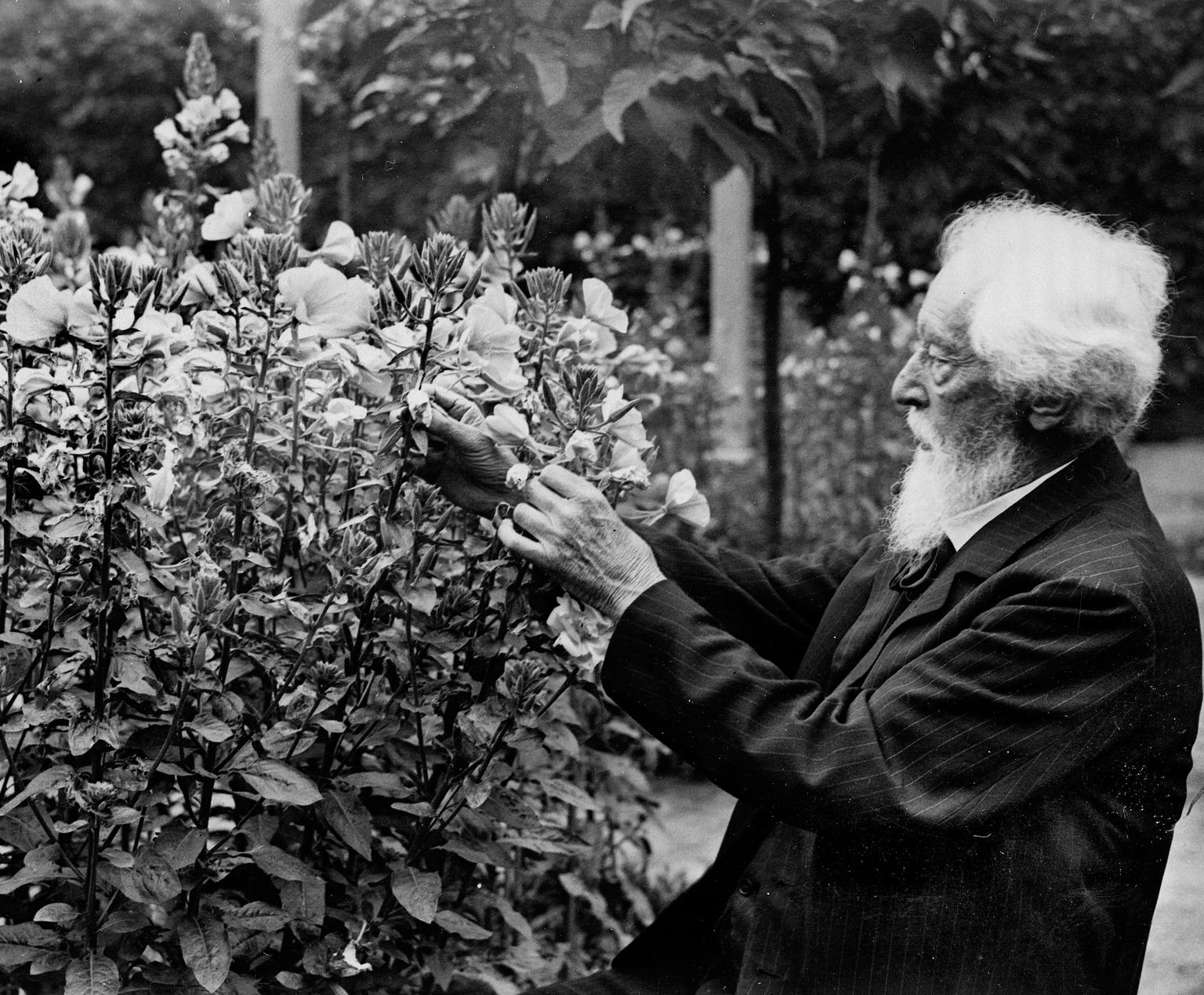
Hugo de Vries discovered the 3:1 ratio of characteristics in experiments with a variety of plants in the 1890s. He would later concede that Mendel had a claim to priority in the discovery.
Laws of inheritance refined
Mendel had established two laws of inheritance. First, the fixed proportions of characteristics in offspring led him to conclude that the particles of inheritance came in pairs. There was a particle pair for flower colour, a pair for seed colour, and so on. Pairs were formed at fertilization because one particle came from each parent – and separated again when the new generation reproduced to form its own sex cells. If the particles coming together were different varieties (such as those for purple and white flower), only the dominant particle would be expressed.
In modern terms, the different varieties of genes are called alleles. Mendel’s first law became known as the Law of Segregation because the alleles segregated to form sex cells. Mendel’s second law arose when he considered two characteristics. The Law of Independent Assortment suggests that the relevant genes for each trait are inherited independently.
Mendel’s choice of plant species was, it turns out, fortuitous. We now know that the characteristics of Pisum sativum follow the simplest pattern of inheritance. Each characteristic – such as flower colour – is under the control of a single type of gene that comes in different varieties (alleles). However, many biological characteristics – such as human height – are the outcome of the interactions of many different genes.
Furthermore, the genes Mendel studied were inherited independently. Later work would show that genes can sit side-by-side on the same chromosome. Each chromosome carries hundreds or thousands of genes on a string of DNA. Chromosome pairs separate to create sex cells, and the chromosome is then passed on whole. This means that the inheritance of traits controlled by different genes on the same chromosome is not independent. Each pea characteristic studied by Mendel is due to a gene on a separate chromosome. If they had been on the same chromosome, his results would have been more complex and harder to interpret.
In the 20th century, research would reveal the exceptions to Mendel’s laws. As scientists probed more deeply into the behaviour of genes and chromosomes, they confirmed that inheritance can happen in more complicated ways than Mendel had found. However, these discoveries build on, rather than contradict, Mendel’s findings, which laid the foundation for modern genetics.
"I suggest…the term Genetics, which sufficiently indicates that our labours are devoted to the elucidation of the phenomena of heredity and variation."
William Bateson
GREGOR MENDEL
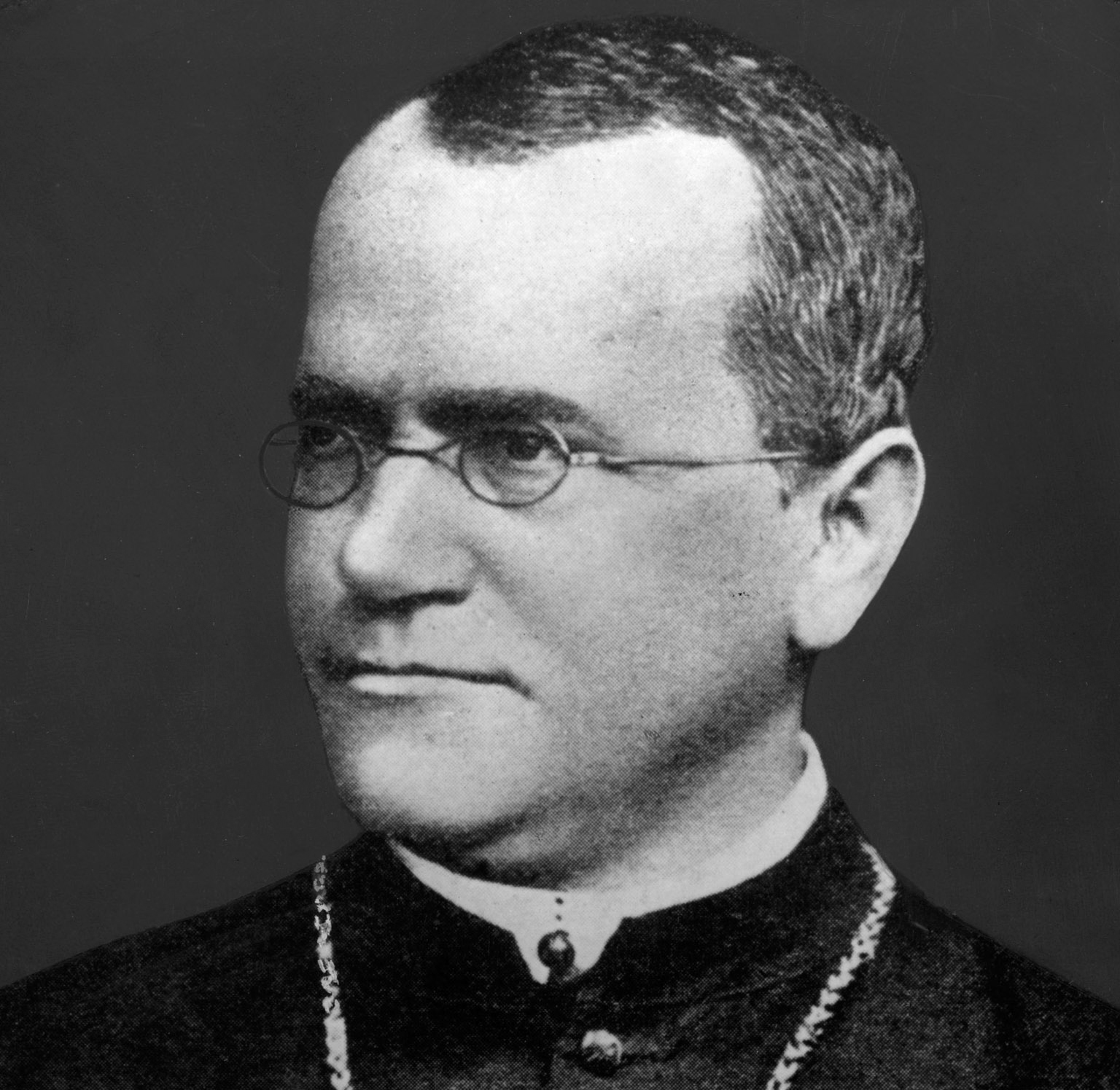
Born Johann Mendel in 1822 in Silesia in the Austrian Empire, Mendel initially trained in mathematics and philosophy before entering the priesthood as a way of furthering his education – changing his name to Gregor and becoming an Augustinian monk. He completed his studies at the University of Vienna and returned to teach at the abbey in Brno (now in Czech Republic). Here, Mendel developed his interest in inheritance – and at various times studied mice, bees, and peas. Under pressure from the bishop, he abandoned work on animals and concentrated on breeding peas. It was this work that led him to devise his laws of heredity and develop the critical idea that inherited characteristics are controlled by discrete particles, later called genes. He became abbot of the monastery in 1868 and stopped his scientific work. On his death, his scientific papers were burned by his successor.
Key work
1866 Experiments in Plant Hybrizidation